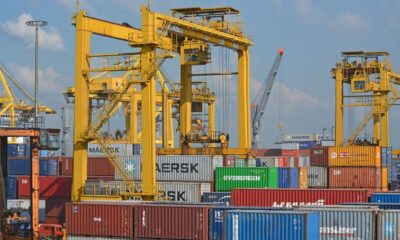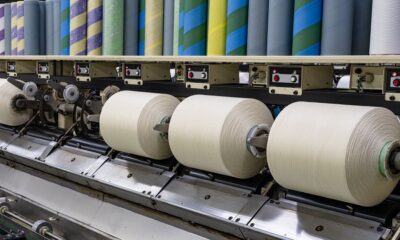Fashion
Indian container cargo to post resilient 8% growth in FY26: CareEdge
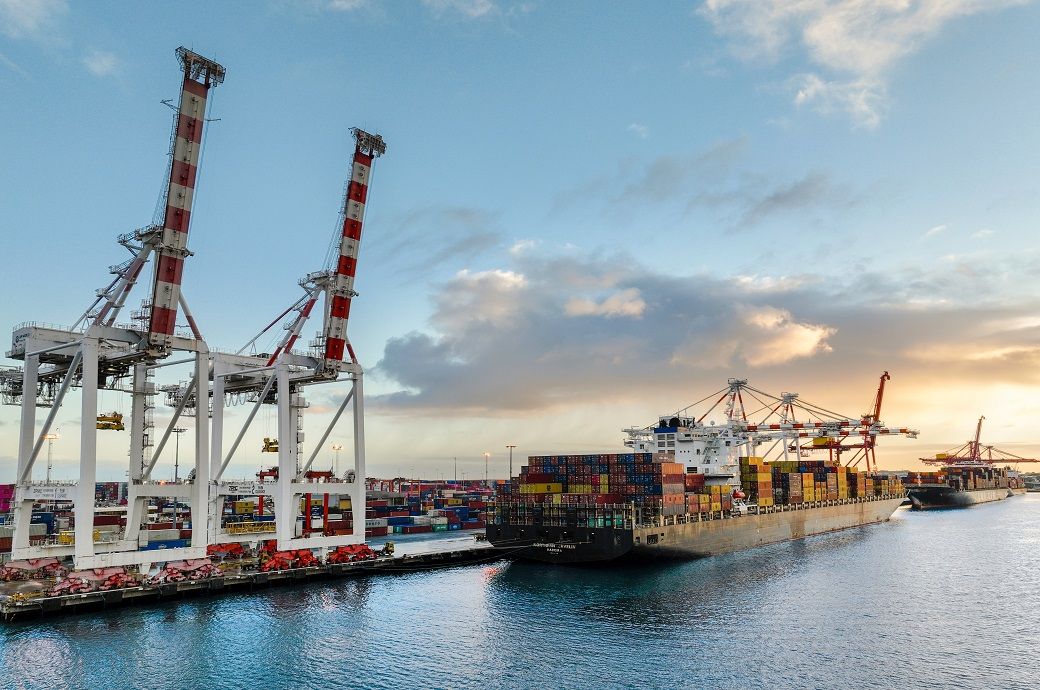
FY26 container volume growth is estimated to moderate by 100-150 basis points, with the underlying assumption of one-third impact of US tariff on export volumes of affected sectors, compensated mainly by capacity additions and increased transhipment activity, it said.
Container volume growth in India will be 8 per cent in FY26, backed by capacity expansion, rising transhipment activity and slated completion of the entire Western Dedicated Freight Corridor, CareEdge Ratings recently projected.
Rising insurance costs, shipping rates owing to volatility in the Shanghai Containerised Freight Index and transit times are weighing on the sector’s growth trajectory, it noted.
Rising insurance costs, shipping rates owing to volatility in the Shanghai Containerised Freight Index (SCFI) and transit times are weighing on the sector’s growth trajectory, it noted.
Cargo volumes on Gujarat’s coast fell by 6 per cent in May 2025 due to India-Pakistan tensions.
Additionally, the United States has imposed a 50-per cent tariff on Indian imports, adversely affecting key export sectors like home textiles and speciality chemicals.
While the United States accounting for 20 per cent of India’s exports, its share in sea-based trade (excluding electronic items) is barely 5 per cent, implying a moderate direct impact on port volume, CareEdge Ratings said in a release.
The organisation expects a significant impact on segments such as home textiles and readymade garments, gems and jewellery, shrimp products, automobile and engineering components and speciality chemicals based on their export exposure to the US and comparative tariff structure with other Asian countries.
Fibre2Fashion News Desk (DS)
Fashion
Bangladesh’s Chittagong Port Authority starts imposing new tariffs
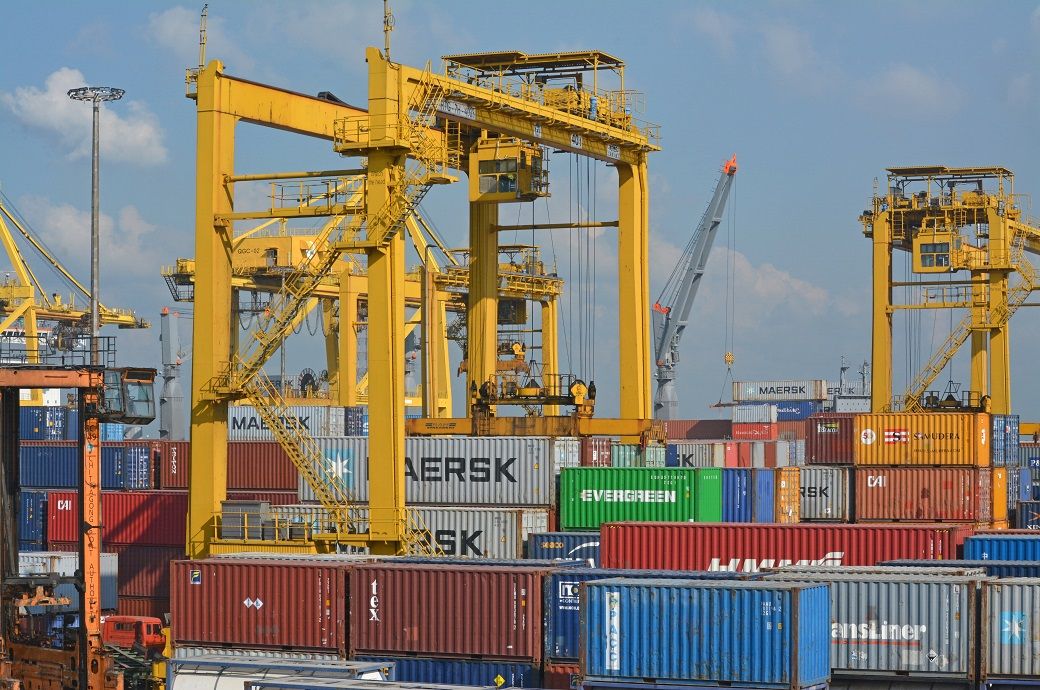
CPA instructed its departments to proceed with implementing the revised tariff structure, according to domestic media reports.
Bangladesh’s Chittagong Port Authority (CPA) has started implementing the new tariff schedule following the Supreme Court’s order overruling the High Court’s stay.
CPA instructed its departments to proceed with implementing the revised tariff structure.
The High Court had earlier stayed—for 30 days—the CPA’s September 30 circular issued to implement the new tariff announced.
The High Court had earlier stayed—for 30 days—the CPA’s September 30 circular issued to implement the new tariff announced.
The Bangladesh Maritime Law Society (BMLS) had filed a writ petition in the High Court challenging the revised tariffs.
Fibre2Fashion News Desk (DS)
Fashion
India’s IIP sees 0.4% YoY growth in Oct 2025: Quick official estimates
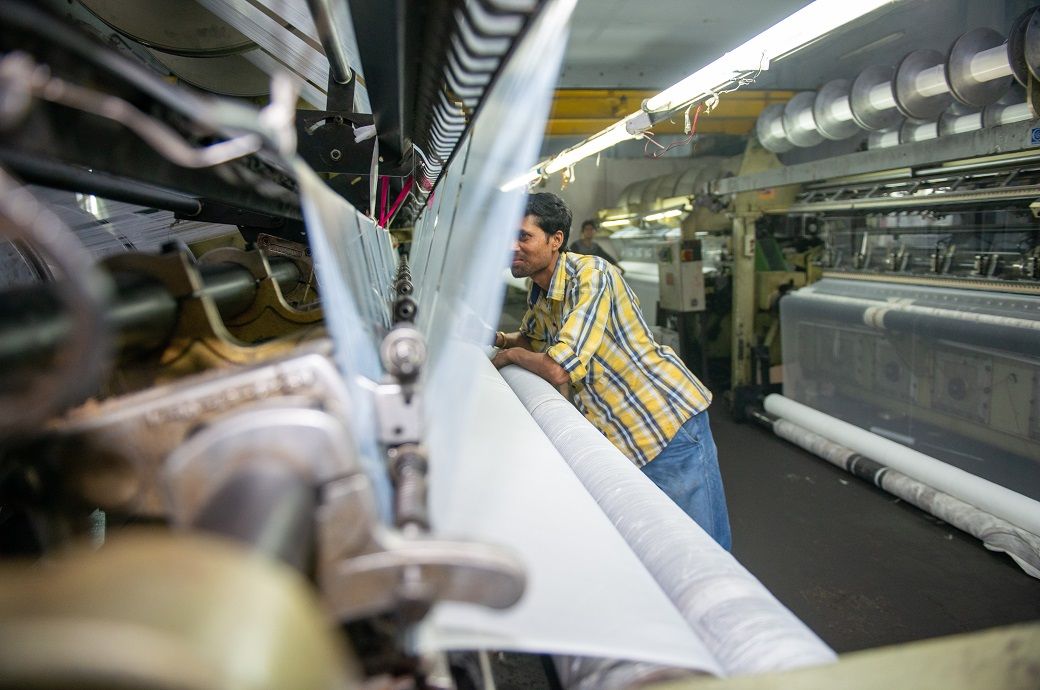
The slow growth in October could be attributed to less number of working days because of a number of festivals.
The growth rate of India’s index of industrial production (IIP) for October was 0.4 per cent YoY, quick official estimates show; it was 4 per cent in September.
The IIP stood at 150.9 against 150.3 in October 2024.
The YoY growth rate for the manufacturing IIP (151.1) in the month was 1.8 per cent.
Within manufacturing, nine out of 23 industry groups recorded a positive YoY growth in October 2025.
The YoY growth rate of the manufacturing IIP in October was 1.8 per cent. The IIP for manufacturing was 151.1 in the month, a release from the ministry said.
Within the manufacturing sector, nine out of 23 industry groups recorded a positive YoY growth in October 2025.
The indices stood at 148.9 for primary goods (growth rate minus 0.6 per cent), 111.8 for capital goods (growth rate 2.4 per cent), 166.5 for intermediate goods (growth rate 0.9 per cent) and 197.2 for infrastructure/construction goods (growth rate 7.1 per cent) for October.
The indices for consumer durables (growth rate minus 0.5 per cent) and consumer non-durables (growth rate minus 4.4 per cent) stood at 129.2 and 139.9 respectively.
Fibre2Fashion News Desk (DS)
Fashion
American Eagle Outfitters raises annual sales forecast

By
Reuters
Published
December 2, 2025
American Eagle Outfitters raised its annual comparable sales forecast on Tuesday, betting on marketing-driven demand for its apparel and accessories during the holiday season, sending its shares up about 15% after the bell.
Marketing campaigns and newer collections of clothing, along with a focus on high-earning consumers, have helped the company offset losses from the broader retail slowdown and budget-conscious consumers pulling back on discretionary spending amid inflationary prices and trade-policy-driven uncertainty.
The company has been trying to boost demand through its marketing initiatives, including the “Great Jeans” denim campaign with actress Sydney Sweeney, a tie-up with NFL player Travis Kelce’s clothing brand Tru Kolors, and partnerships with tennis player Coco Gauff and actress Jenna Ortega.
The company sees annual comparable sales rising in the low single digits, compared to its previous expectations of about flat growth.
The company posted quarterly net revenue of $1.36 billion, compared with analysts’ estimates of $1.32 billion, according to data compiled by LSEG.
Quarterly comparable sales rose 4%, compared with analysts’ estimates of a 2.4% rise. The company sees current quarter comparable sales rising between 8% and 9%, compared with analysts’ estimates of a 2.2% rise.
© Thomson Reuters 2025 All rights reserved.
-

 Entertainment1 week ago
Entertainment1 week agoWelcome to Derry’ episode 5 delivers shocking twist
-

 Tech3 days ago
Tech3 days agoGet Your Steps In From Your Home Office With This Walking Pad—On Sale This Week
-

 Tech1 week ago
Tech1 week agoWake Up—the Best Black Friday Mattress Sales Are Here
-

 Sports2 days ago
Sports2 days agoIndia Triumphs Over South Africa in First ODI Thanks to Kohli’s Heroics – SUCH TV
-

 Entertainment2 days ago
Entertainment2 days agoSadie Sink talks about the future of Max in ‘Stranger Things’
-

 Fashion2 days ago
Fashion2 days agoResults are in: US Black Friday store visits down, e-visits up, apparel shines
-

 Fashion1 week ago
Fashion1 week agoCanada’s Lululemon unveils team Canada kit for Milano Cortina 2026
-
Uncategorized1 week ago
[CinePlex360] Please moderate: “Americans would


